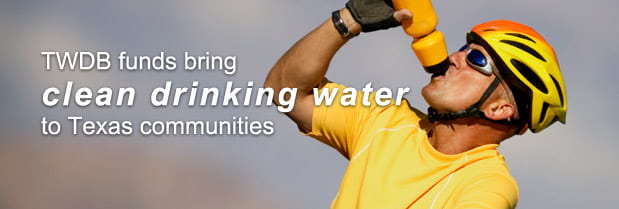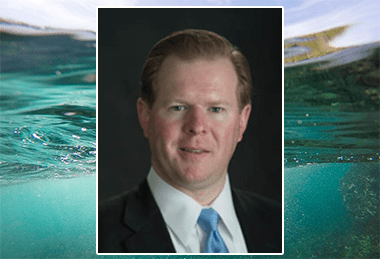
Peter Lake, Chairman of the Texas Water Development Board
What are your priorities as Chairman of the Texas Water Development Board?
I was extremely honored when Governor Abbott designated me Chairman earlier this year. It’s a privilege to work each day with a tremendously talented and dedicated team to accomplish a mission that is vital to this state. The TWDB has set a new standard for excellence since the launch of the State Water Implementation Fund for Texas (SWIFT) program in 2013, and I intend to carry that forward in our work to ensure that Texas has the water supply it needs for the future.
TWDB has taken a new role in flood planning after the Wimberley flood in 2015. How do you make sure that this new role does not impinge on TWDB’s other roles such water planning and water financing?
The TWDB’s core functions are water science, water planning, and water infrastructure funding. We’ve historically performed these functions in efforts to develop new water supplies for the state, but protecting Texas from flood also requires science, planning, and funding. The TWDB has great experience in these areas, and addressing the challenge of flood just means we’re deploying the same tools to help manage the same natural resource but from a very different angle.
We’ve been working with flood issues since the Texas Legislature moved the state coordination efforts for the National Flood Insurance Program (NFIP) to the Texas Water Development Board in 2007. The statewide flood efforts driven by Governor Abbott’s 2015 MOU with our agency resulted in the TexMesonet.org and TXFlood.org websites and the installation of a series of gages in critical locations that allow for early warning of flooding events.
Flood mitigation projects qualify for several of our loan programs (the Clean Water State Revolving Fund and the Development Fund), and we’re currently developing the State Flood Assessment (www.texasfloodassessment.com). The State Flood Assessment will provide the legislature with a better understanding of existing flood mitigation programs, risks, and needs for floodplain management and mitigation across the state so that they can develop the best solution possible for the state.

The current state water plan will require $63 billion over 50 years to implement, while maintenance, upgrades and replacement of the existing water and wastewater infrastructure could require even more over the same period. As an expert in finance, do you think Texas has all the programs in place that will be needed to meet the costs of these water needs?
The TWDB has a variety of funding programs to help communities build new infrastructure as well as improve existing infrastructure, including the newest program–SWIFT, the Drinking Water and Clean Water State Revolving Funds (DWSRF & CWSRF, respectively), and the Development Fund. Earlier this year we cross-collateralized the DWSRF and the CWSRF for the first time, which creates greater total funding capacity in the combined program than if the two programs remained separate. Additionally, we are seeing great strides in technology that allow people to get more mileage out of the same amount of water through conservation, reuse, and other innovative strategies.

The Texas Water Development Board staff is recommending water demand projections for the new round of regional and state water planning that are 2.4 million acre feet per year less in 2070 than was projected in the previous (2017) state water plan. Is this evidence that Texans are responding to calls to conserve water and use it more efficiently?
This is the impact of technology and conservation that I’m talking about! Texans are being smart about making their water supplies go farther. They’re using everything from drones with spectral imaging capabilities to enhance irrigation in agriculture to advanced sonic, infrared, and LIDAR technologies to improve leak detection and precision pipeline replacement.
Given the close succession over the last several years of extreme drought and extreme floods do you think a new awareness of water issues has developed among Texans?
It’s always a challenge to raise awareness of water issues except in extreme situations, such as drought or flood. People have short-term memories when it comes to these conditions and quickly forget until the next drought or flood. Texas is a vast state and every region has unique challenges when it comes to planning and mitigating drought and flood. Fortunately, the legislature had the vision to establish the SWIFT program in 2013, and its tremendous success since then is a testament to Texas communities’ willingness to plan for future droughts.

